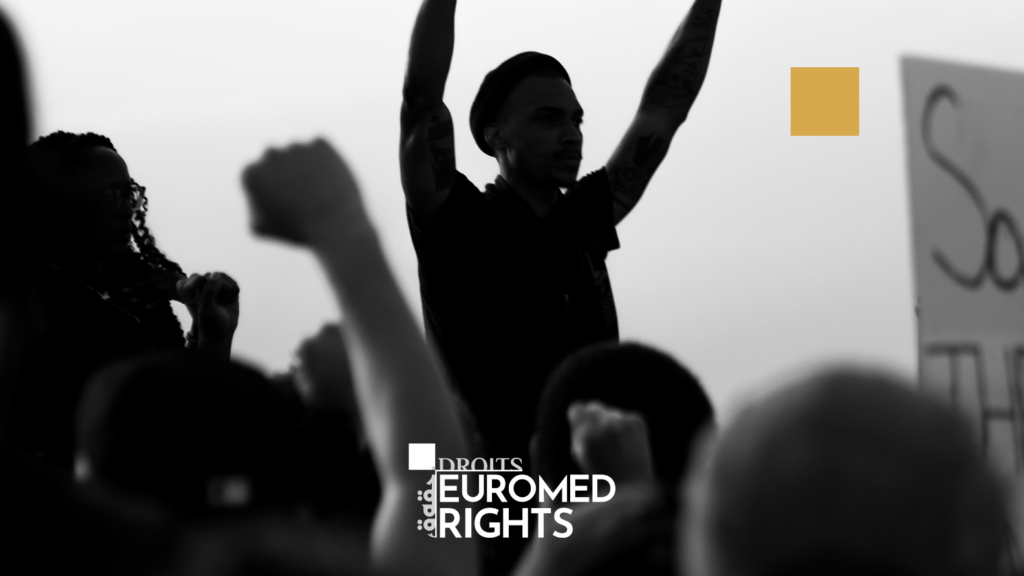As of 24 January Israeli attacks against Palestinian civilians in Gaza have caused the deaths of over 25,000 Palestinians and injured more than 62,000 Gazans. The number of Palestinians dead, injured or missing since the beginnings of the campaign already corresponds to 4% of the Gaza population, and the massive violence against civilians imposed by Israel on 2.3 million Palestinians shows no sign of tapering soon.
A substantial percentage of these victims are internally displaced persons (IDPs), an extremely vulnerable section of the population. Before the war, Palestinian refugees represented a staggering 70% of the Gaza population, many of them expelled from their ancestral homelands in historic Palestine during the 1948 Nakba and forced to seek shelter in derelict refugee camps in Gaza. Many of these refugees were victimized a second time due to forced evictions during the war and obliged to move several times, resulting in over 80% of the population of Gaza being internally displaced. Most IDPs are now living in shelters and makeshift tents in open areas, facing severe overcrowding, starvation and a lack of basic hygiene and health necessities.
As a joint statement by the Palestinian organizations Al Mezan, Al-Haq and the Palestinian Center for Human Rights reads,during the course of the war IDPs have been targeted by the Israeli government in a systematic manner. UNRWA’s Commissioner-General has publicly stated that 300 people have been killed and over 1,000 were injured while seeking shelter under the United Nations flag since the beginning of the bombardments. On January 4th, Israel launched an attack against shelters in the Al-Masawi area near Khan Younis, resulting in the death of 17 Palestinians. On the same day, the building of the Palestinian Red Crescent Society in Khan Younis was targeted twice, resulting in the death of 6 individuals. On October 19th, 2023, Israel bombed St. Porphyrius church, where several IDPs were sheltering, resulting in the death of 18 Palestinians.
Beyond the threat of direct attacks, the precarious nature of shelters risks the proliferation of epidemics and infectious diseases among IDPs, which poses a significant threat to the health of Gaza inhabitants. This risk is amplified by Israel’s siege of the Gaza strip and its blockade preventing the entry of sufficient essential needs such as water, food, medicine and fuel, which is necessary to operate water pumps and Gaza’s water desalinization plants. To this already precarious situation we must add the accumulation of untreated waste and sewage in areas where IDPs congregate, the lack of adequate medical equipment and the inability of defense crews to recover the bodies of Palestinians currently decomposing under the rubble. This has resulted in “180,000 cases of respiratory infections, 250,000 cases of mumps, 135,000 cases of diarrhea, 26,000 cases of chickenpox, and 35,000 cases of lice infestation” being reported only in Southern Gaza by EuroMed Rights member Al Mezan. The level of the epidemiological crisis in Northern Gaza remains unreported due to the impossibility of field workers to collect information in the region.
There is evidence of a deliberate intent by Israel’s to target vulnerable IDPs. This exacerbates an already unprecedented humanitarian crisis. For example, Giora Eiland, the former head of the Israeli National Security Council, stated recently that “Severe epidemics in the South of Gaza will bring victory closer and reduce casualties among Israeli soldiers.” The position of Palestinian CSOs is that “Israel’s intentional targeting of civilian infrastructure crucial for the survival of the Palestinian people in Gaza, including sewage, water and sanitation facilities, combined with the ongoing collapse of the healthcare system due to Israel’s siege and attacks, is a deliberate effort to exacerbate the already severe humanitarian conditions and, thereby, deliberately inflict conditions of life calculated to bring about the physical destruction of Gaza’s population.”
With the warning that up to 25% of Gaza’s population might perish from preventable transmittable diseases in one year, the EU must demand an unconditional, permanent and durable ceasefire, lest it risks allowing for an even greater increase in Gaza’s civilian death toll. The EU must also demand that Israel allow the entrance of unlimited humanitarian aid to all Gaza’s territory, end the siege of the Strip and ceases to attack civilian targets, including Internationally Displaced Persons. Finally, the EU must support all international measures to ensure Israeli accountability for war crimes, including supporting the ICC investigation, the South African submission to the ICJ on the crime of Genocide, implementing a two-way arms embargo on Israel and freezing the EU-Israel Association Council so long Israeli violence against Palestinians continue.

